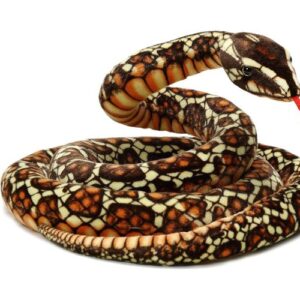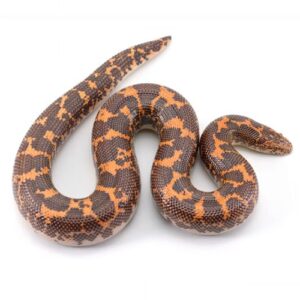Morongo Valley Rosy Boa Habits
Description
Known scientifically as Lichanura trivirgata gracia, the Morongo Valley Rosy Boa is a stunning snake native to the southwestern United States and northern Mexico.
This subspecies of the Rosy Boa family has gained a great deal of attention from herpetologists, reptile enthusiasts, and nature lovers due to its striking appearance and unusual behavior. Let’s read below about “Morongo Valley Rosy Boa Habits”:-
Overview of Morongo Valley Rosy Boa
Discover the intriguing world of the Morongo Valley Rosy Boa and its vital role in maintaining ecological equilibrium, from its habitat and physical attributes to its behavior and conservation status.
Conditions of Origin and Destination
Basin of Morongo Numerous Rosy Boas can be found in the arid regions of the southwestern United States, especially in Baja California, southern California, and Arizona. These areas are perfect for the secretive reptiles that call the rocky outcrops, dry washes, and scrubland their home. They might be able to make it through the hot, dry weather by taking refuge in nooks and fissures in the rocks.
Physical Characteristics
The Morongo Valley blushing boa is distinguished from other boa species by its attractive color and example. Their typically brown or pale pink coloration is punctuated by three faint stripes on their back. The contrast between the faded stripes and the light foundation is what makes this example so attractive.
Females are generally larger than males, yet both sexes average somewhere between 2 and 3 feet tall.
Morongo Valley Rosy Boa Habits and Diet
The rosy boa of the Morongo Valley subspecies is nocturnal, meaning it is active during the dark hours. The majority of their diet consists of reptiles, birds, and small mammals. The strong muscles of these non-venomous constrictors allow them to squeeze their victim until it suffocates, at which time they consume it whole. The stealth and patience of a rosy boa allows it to wait for an unsuspecting prey to approach before striking with lethal accuracy.
Reproduction and the Life Cycle
The female Morongo Valley Rosy Boa produces a live baby after a successful mating season. Usually in the spring, after a pregnancy of around 4 or 5 months, the female boa gives birth to a small litter of 3 to 10 young. These newborns show extraordinary autonomy from the get-go, venturing out to hunt and seek shelter not long after birth. In order to grow and mature, young rosy boas regularly shed their skin.
Current Conservation Practices
The conservation status of the Morongo Valley Rosy Boa is a topic of concern among conservationists. Although the species as a whole is safe for the time being, there may be isolated populations that are in jeopardy due to factors like habitat degradation, automobile deaths, and illicit pet trade. Maintaining these populations over time requires careful monitoring.
The only way to ensure the survival of these endangered reptiles is by concerted efforts to protect their natural habitat, reduce the number of animals killed on roadways, and raise public awareness. Moreover, stringent regulations should be in place to discourage illegal collection and trafficking, both of which can have detrimental effects on wild populations.
Importance in the Natural World
The Rosy boas of Morongo Basin serve as both predators and prey, making them an integral part of the ecosystem. The population of rodents and other small animals is kept in check thanks to them, which is good for the environment. Without these predators, rodent populations can explode, wreaking havoc on crops and spreading disease.
Because larger predators like raptors and other mammals consume pink boas, they form an important part of the food chain. Their presence strengthens and diversifies the local ecosystem.
FAQs
How can I know if a pink boa is safe to handle?
Even though they can bite, rosy boas would rather bite their prey than people. When threatened, pink boas will employ other strategies besides biting. Their venomless bite may hurt, but it won’t kill you.
What is the size of Morongo Valley Rosy Boa?
An adult Rosy Boa, when measured from head to tail, can be anywhere between 17 and 36 inches in length. The average height of an adult is 24 inches. Extremely rare, with the largest ever recorded being 48 inches long.
Is Morongo Valley Rosy Boa found in India?
Eryx johnii, frequently known as the Indian Sand Boa, is an innocuous snake that lives in the parched districts of the Indian subcontinent. This snake, which midpoints 75 centimeters long, is stocky and principally rosy brown.
Conclusion
The Morongo Valley Ruddy Boa, with its incredible appearance and intriguing way of behaving, is a living demonstration of the miracle and multifaceted design of the regular world.
Mindfulness, support for protection projects, and a comprehension of the imperative job these snakes play in their environment are pivotal strides toward guaranteeing the endurance of the Morongo Valley Blushing Boa and other creature species that make our reality surprising. Allow us to commend the wondrous variety of life on The planet and work together to protect it. I hope you like riding “Morongo Valley Rosy Boa Habits”.






Reviews
There are no reviews yet.